Rare things in the world deserve preservation. Similar is in the case of unique and rare plant species in India. Our Motherland houses the richest diversity of flora that accounts for 6% of all plant species in the world. Among them, what needs our immediate attention are the ones that are on the endangered list of plant species.
Several factors work in the background that cause the rarity of these plants. The first reason being, the plant might be one-of-a-kind. The second, and the most dangerous reason behind their declining count is Mankind. Despite nature’s inherent amicableness towards human beings, Homo sapiens always end up causing harm to it in some way or the other.
10 Threatened/Rare Plant Species in India
India’s diversity in flora has always been spellbinding. Starting from exotic plant species to the native ones, once favorable climatic environment and ecology boosted their growth. Unfortunately, it is no longer the same anymore.
In the list below are the ten rare species of flora in India that either need to be conserved or are already under conservation. In essence, these plant species are in a vulnerable state. They deserve some extra attention from our end to bring them back from the threat of extinction.
1. Diospyros Celebica
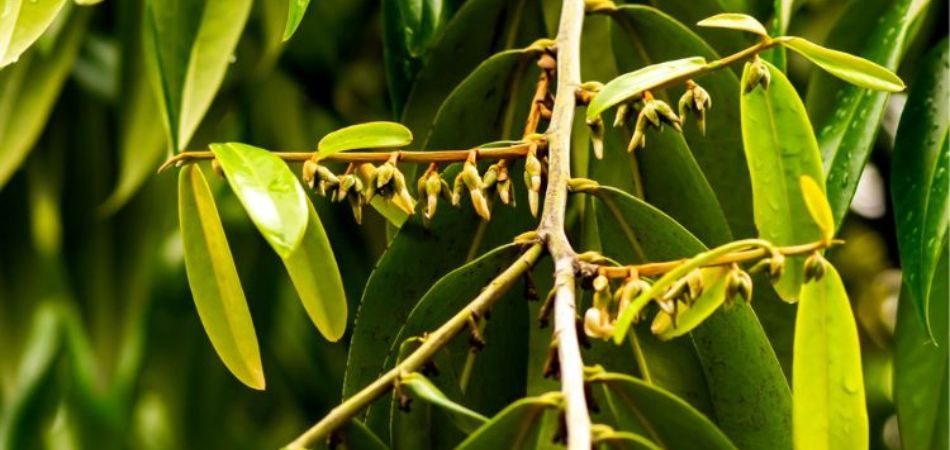
Popular among woodworkers, ebony trees belong to the Ebenaceae family of the Plant Kingdom. They grow up to a height of 20 meters. This tree species has a striped appearance in dark brown and black colors. They grow in a tropical environment and are typically hardwood trees.
Ebony trees are useful in high-quality timber production and turnery. It is a highly valuable wood for furniture making because of its top-notch durability, sturdiness, and resistance to high polishing. Ebony is also used in making high-end musical instruments for its inherent acoustic properties.
Since colonial times, ebony trees have been the source of premium-quality wood. Due to its extensive logging, there is a dearth in the availability of ebony trees these days. The count has seen a rapid decline in the past two centuries. Hence, it has become one of the most threatened plant species in India. The versatility of this flowering tree species is the major reason for its exploitation since time immemorial.
Additional Details
- Common Name: Ebony Tree
- Grows In: Karnataka
- Genus: Diospynus
2. Polygala Irregulars
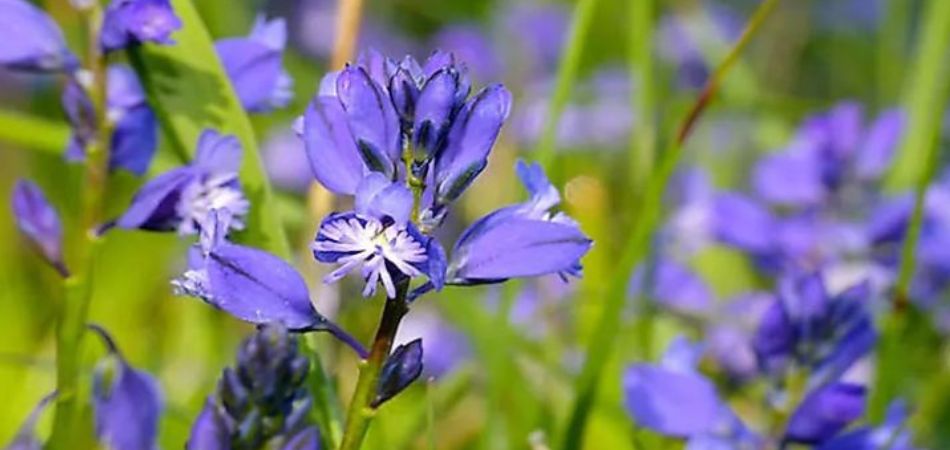
This flowering plant species is a perennial herb that belongs to the family Polygalaceae. It has an average height of 17 to 34 centimeters, however, some grow up to 60 centimeters. Milkworts bloom at an altitude of 1000 meters during the monsoons, between July and August. They grow in the meadows, slopes, and grasslands primarily in Gujarat, but also in Bihar and West Bengal.
This flowering plant species has medicinal properties. The chemical property of this plant relieves people of chest congestion and bronchial problems. Besides respiratory issues, milkworts treat several other ailments related to digestion or skin conditions. Its excessive use in the production of medicines ultimately landed it on the list of endangered flora of our country India.
Milkworts are now an endangered plant species, the major reason being habitat loss. Due to urbanization and agricultural purposes, a lion’s share of their habitat is being destroyed. Additionally, the introduction of foreign species into their land led to the spread of incurable unknown diseases among this genus.
Additional Details
- Common Name: Milkwort or Snakeroots
- Grows In: Gujarat, Bihar, and West Bengal
- Genus: Polygala
3. Amentotaxus Assamica
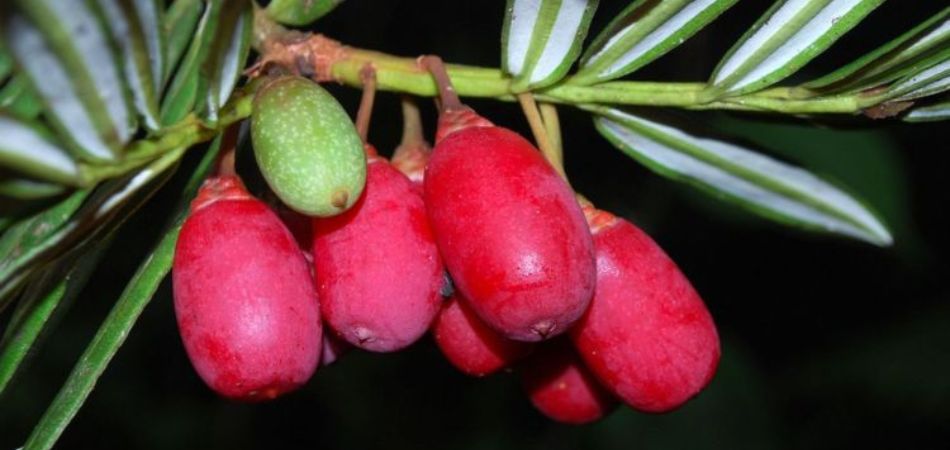
A critically endangered plant species, Assam catkin yew is endemic to Arunachal Pradesh. It is a conifer plant species, 2-5 meters tall, categorized under the Taxaceous family of the plant kingdom. They grow at a high elevation of 1600 to 2000 meters in subtropical biomes.
Assam catkin yew has a high economic value due to its medicinal properties. It has significance in Ayurvedic treatments for fever, inflammation, and skin problems. Moreover, the yew secretes a chemical that is a source of a potential anti-cancer drug, Taxol. Apart from medicinal benefits, in ancient times, it was used in making bows.
This plant has an extremely low reproduction rate due to the declining quality of ecology and diminishing natural habitat. Reckless exploitation of land and afforestation are the major reasons this endangered species needs immediate attention for conservation purposes.
Believed to have existed since the Mesozoic Era, it falls under the red list of the IUCN (International Union for Conservation of Nature) as an endangered plant species. Its limited distribution and availability is a matter of grave concern. No wonder it is one of the rare plant species in India.
Additional Details
- Common Name: Assam catkin yew
- Grows In: Arunachal Pradesh, including Turoo hills, Dafla hills, and Delei valley.
- Genus: Amentotaxus
4. Lotus Corniculatus
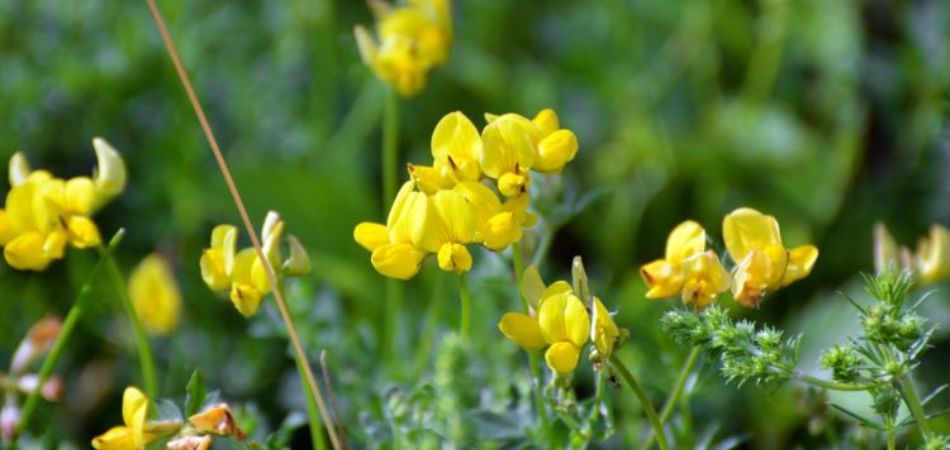
Bird’s foot trefoils are perennial herbaceous flowering plants that belong to the pea family Fabaceae. These flowering plants commonly grow in the regions of Western Himalaya with an altitude of 900- 4000 meters. They are 10-15 cm tall with radiant yellow flowers. These endangered species grow in dry hill pastures, grasslands, and even on rocky slopes.
The plant serves as fodder, natural manure, soil improver, and medicine. The flowers have medicinal properties. They can cure respiratory and cardiac problems. Besides this, the plant has anti-inflammatory properties that reduce skin inflammation.
The seed pods, leaves, and yellow flowers are edible. The dried plant is often used to prepare refreshing tea and has a soothing effect on the body. It has other usages as an ingredient for several other food preparations like the Kachru, a traditional dish of Gujarat.
Despite the ability to grow in diverse environments, it is still on the verge of extinction. Frequent climate change due to global warming, afforestation, and urbanization is drastically messing up with their existence. Moreover, its excessive usage in fodder and as an ingredient is yet another reason it has landed on the endangered list of plant species in India.
Additional Details
- Common Name: Bird’s foot trefoil
- Grows In: Himalayan region
- Genus: Lotus
5. Actinodaphne Lawsonii
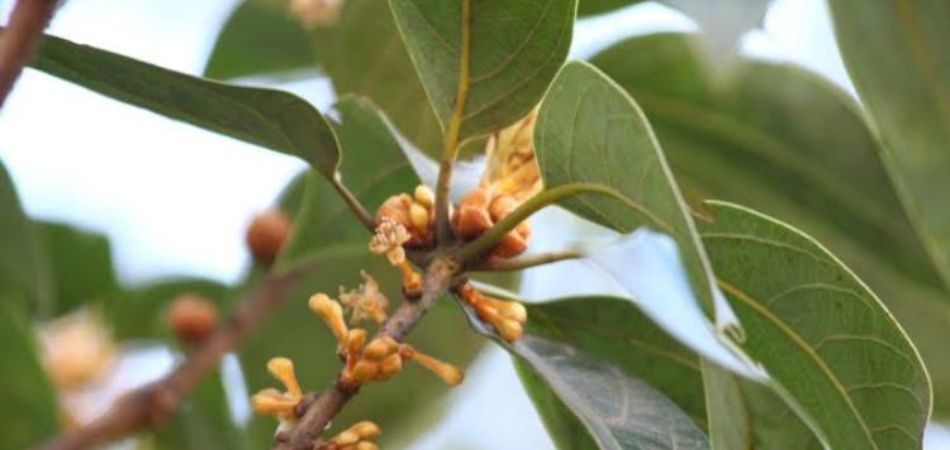
Having its roots in the evergreen tropical forests of Kerala, Actinodaphne Lawsonii falls under the Lauraceace family. Endemic to the Western Ghats in the peninsular region of India, it is scattered in different areas.
They commonly grow in forests lying between the altitudes of 600 to 1200 meters. The plant species has a height of 10-18 meters and blooms in February and August. It has large fruits and the seeds are useful for their oil. The barks are useful for fracture treatment.
With increasing threats in the form of loss of habitats, overexploitation of resources, and climate change, it is now one of the rare plant species in India. Now that it is on the list of endangered plant species, much of the area is under conservation.
Additional Details
- Common Name: Litsea obovata (Nees)
- Grows In: Western Ghats, Nilgiri Biosphere Reserve in Karnataka, and Tamil Nadu States.
- Genus: Actinodaphne
6. Chlorophytum Tuberosum
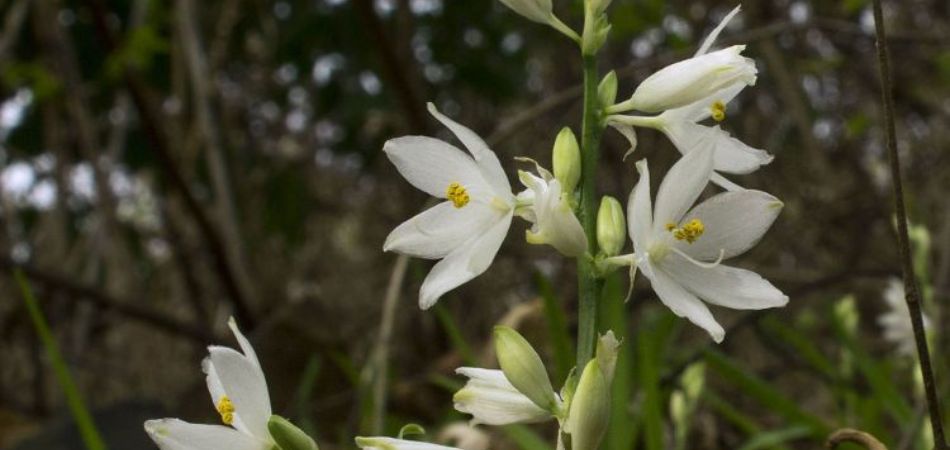
Locally known as Safed Musli, Chlorophytum Tuberosum, you can spot them in dense forests, and rain-fed regions of Aravalli hills in Rajasthan, Gujarat, and Madhya Pradesh. It belongs to the Lilaceae family and grows up to 1.5 to 2 feet tall.
The Safed Musli has been declared a critically endangered plant species. The reason lies in its myriad aesculapian benefits. The medicinal properties of C. Tuberosum are remarkable. It has a high value in Ayurveda due to the presence of an abundant variety of phytoconstituents in it. Pharmaceutical scientists use it in making galactagogues and aphrodisiacs. Since it works as a Viagra, it saw an upswing in the market.
Besides treating sexual disorders, it cures other ailments like diabetes, kidney stones, cholera, and leucorrhoea. Moreover, its antioxidant, antimicrobial, anticancer, and immunomodulatory properties are used to make several other pharmaceutical drugs.
India is facing a dearth in the number of these plant species. Excessive urbanization has disturbed the entire ecosystem. The percentage of this category of flora is decreasing gradually. As a consequence of climate change and habitat loss, Safed Musli is a threatened plant species. Unless and until proper conservation actions are taken, India will lose a gem of a plant species.
Additional Details
- Common Name: Edible Chlorophytum (Safed-musli)
- Grows In: Gujarat, Rajasthan, and Madhya Pradesh.
- Genus: Chlorophytum
7. Acacia Planifrons
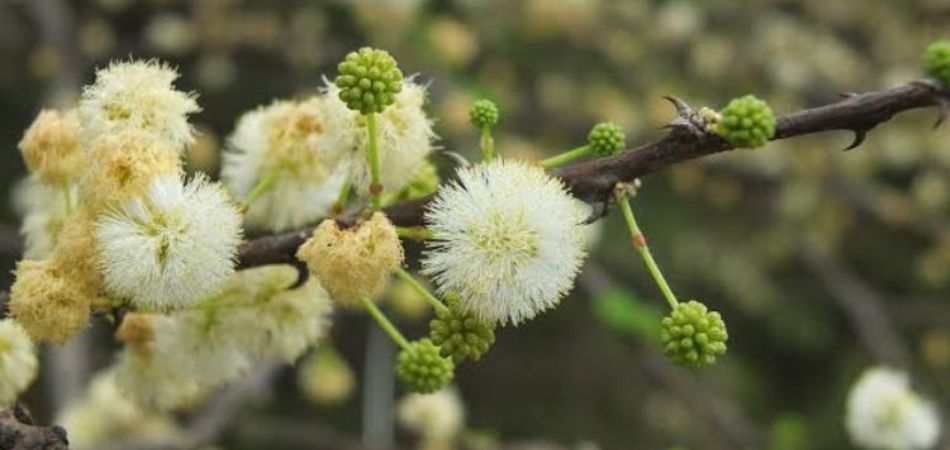
One of the names on the list of endangered species of flora is Umbrella Thorn. Commonly found on hillocks or wastelands of peninsular regions, this dry deciduous forest-type flora belongs to the Fabaceae family. It is a rare plant species of 10-meter-high that grows between October and April.
The inflorescence of acacia planifrons and the widespread branches of it appear like an open umbrella, hence the name. Most of the tree parts are useful to mankind. The leaves and pods serve as fodder for domestic animals. The wood has medicinal properties to treat wounds and various skin problems.
The major problem is that the number of Umbrella Thorn is declining rapidly. They are mostly found in barren areas with dry atmospheric conditions and need no nurturing to grow. However, the sudden shift in climate change is harming their natural growth process. Additionally, overgrazing and overuse for medicinal purposes have pushed them towards the verge of extinction.
Additional Details
- Common Name: Umbrella Thorn
- Grows In: Tamil Nadu
- Genus: Acacia
8. Blascoi Elaeocarpus
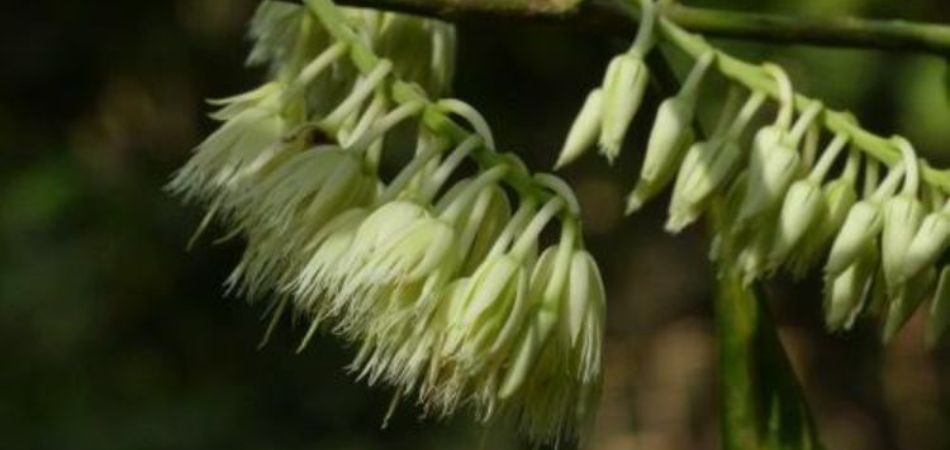
One of the rarest plant species to exist is the Blascoi Elaeocarpus. This rare shrub grows in the Shola Forest of the Western Ghats as it grows in tropical and subtropical areas. Since it is on the list of threatened plant species, Vattakanal Conservation Trust has taken responsibility for preserving the last specimen.
The plant species can be used as ornamental plants to add to the beauty of gardens. Not only for decorative purposes, has the plant acted as a windbreaker to reduce soil erosion. The flower is white and bell-shaped, whereas the seeds are small and thin.
It is a slow-growing evergreen tree which connotes a tardy growth rate. The flowering process takes more than 15 years to begin. As it is already an endangered species, conservation actions have already been taken. However, it needs special attention from biologists to boost the growth rate.
Additional Details
- Common Name: Palni Hills Rudraksha Tree
- Grows In: Tamil Nadu
- Genus: Elaeocarpus
9. Colchicum Luteum
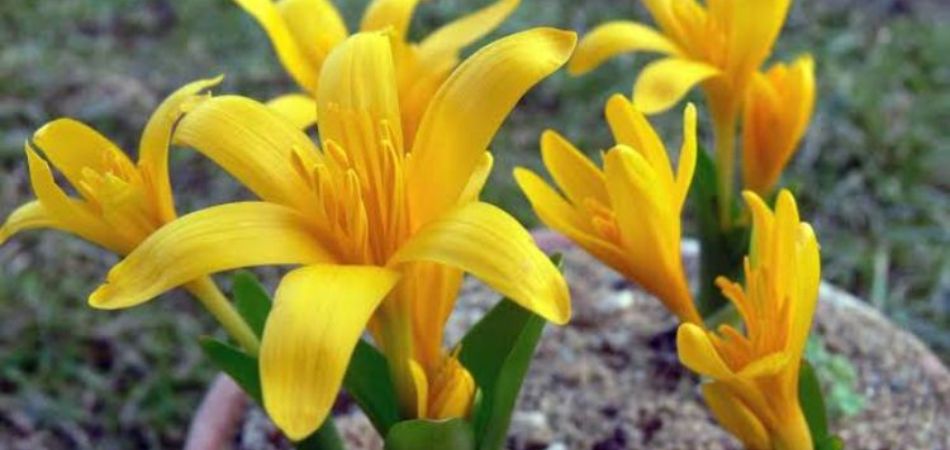
Another one among the rare plant species in India that has raised concerns is the Colchicum Luteum. Growing in low-humid and low-temperature areas, it is a flowering plant species belonging to the Colchicaceae family.
The medicinal properties of this endangered species are truly remarkable. It shows excellent results in the treatment of gout, liver or spleen diseases, and rheumatism. Additionally, it has aphrodisiac, laxative, and carminative properties which have immense commercial value. The corm extract of this plant also treats Bachet’s syndrome and Alzheimer’s disease.
This medicinal plant has poor distribution and propagation, coupled with negligible conservation actions. It requires specific climatic conditions to grow specific to limited regions in India. Moreover, exploitation due to medicinal purposes is also one of the causes of its low availability these days.
Additional Details
- Common Name: Yellow Colchicum
- Grows In: Himalayan region, and Lahul, Himachal Pradesh
- Genus: Colchicum
10. Commiphora Wightii

A member of the Burseraceae family, Commiphora Wightii is a plant species that commonly grows in arid regions. The plant bears fruits and flowers throughout the year. However, results are at a peak from November to February.
The plant secrets a fragrant resin called gugal. That gum has several medicinal uses in Ayurveda. The anti-inflammatory and effective in treating arthritis, and rheumatism. It also cures hyperlipidemia, thrombosis, and hypercholesterolemia. The antispasmodic, carminative, and astringent properties are useful in making several pharmaceutical drugs. It is the main source of guggulsterone.
Habitat loss due to overgrazing and overexploitation are the reasons behind its depleting existence. The harmful methods of gum extraction to prepare resins, poor regeneration process, and slow growth are pushing it toward its declining population.
Additional Details
- Common Name: Gugal
- Grows In: Gujarat, Karnataka, Madhya Pradesh, and Rajasthan.
- Genus: Commiphora
End Thought
Rare things are unique. People spend fortunes to take possession of “limited edition” materials. However, people fail to understand the value of the rare plant species in India.
It remains undeniable that there is beauty in rare things. It is not meant to be toyed with. That is the whole point of why they are given so much security and attention. But when it comes to free things nature provides, people tend to take it lackadaisically. This is when everything goes off the track.
It is high time to start taking action on the conservation of these endangered species of plants. Otherwise, India will face the loss of a bunch of plant species with high medicinal and commercial value.


